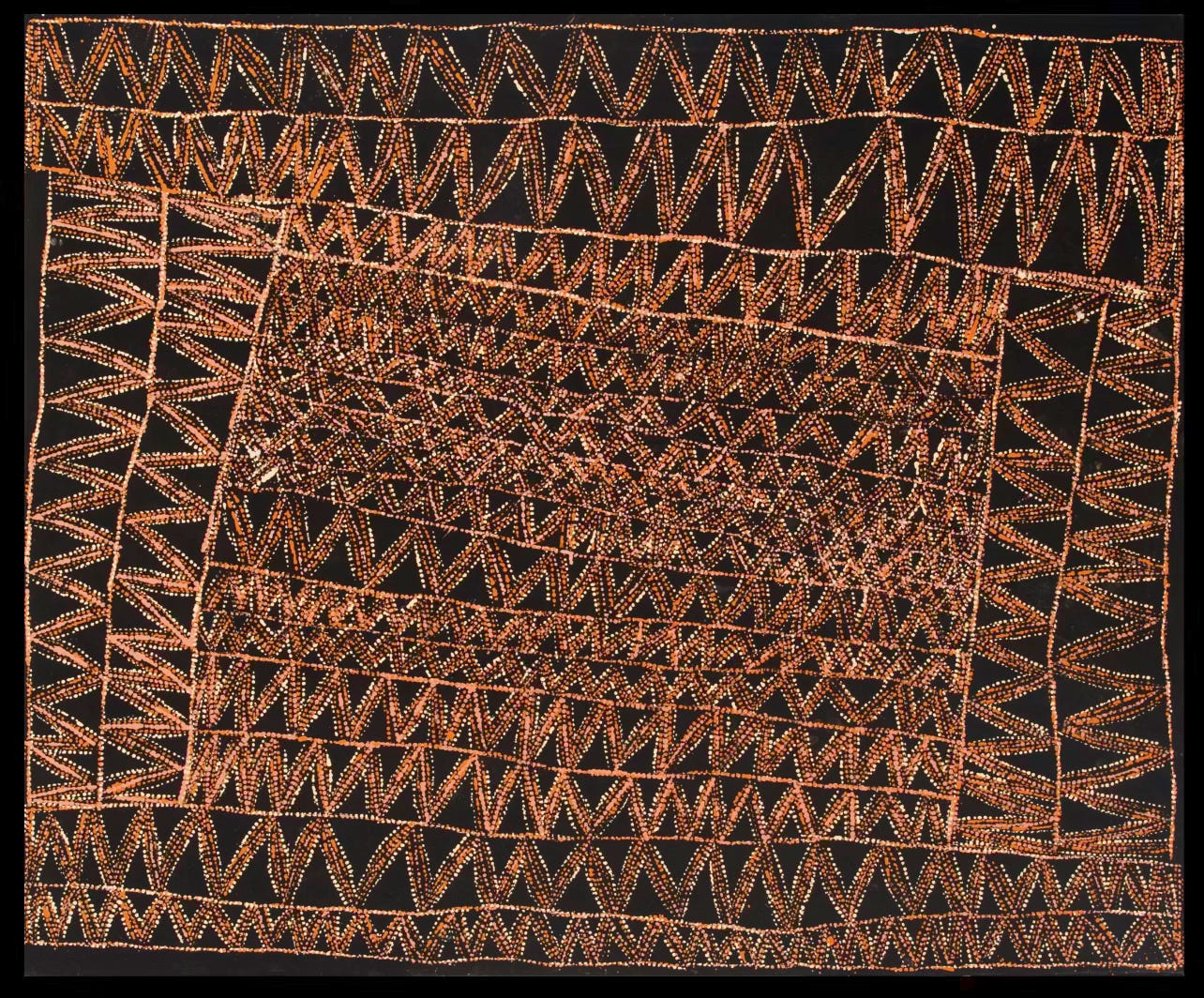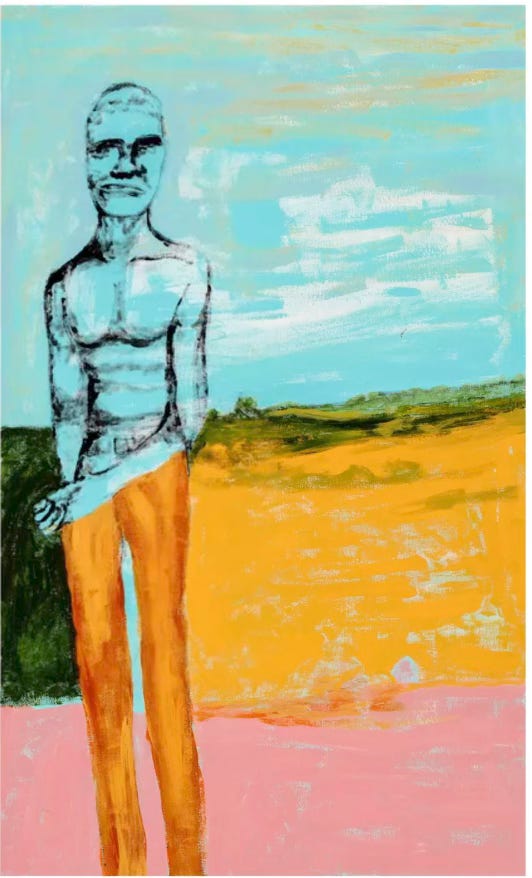It’s been ten years since the Art Gallery of South Australia came up with Tarnanthi, a survey of contemporary Indigenous art that has been second only to the annual Telstra Awards week in Darwin when it comes to taking the temperature of this diverse and vital field. Like Darwin in August, Tarnanthi is presented as a festival, with an accompanying art fair and other events.
The word, in the local Kaurna language means: “to rise, come forth, spring up or appear,” and I’d argue that the most exciting part of this event has always been the sense of discovery, as one meets with new artists and new forms of expression. Although there is a lingering fear of decline as older artists pass away, Tarnanthi has demonstrated time and again, that Indigenous art has incredible powers of self-renewal. As a social event, it has provided a rallying point for people from many remote parts of the country to meet up and see what the other mobs are doing.
I wasn’t present at the party this year, which I’m assured was as bouyant as ever, but the show has taken a very different turn. Too Deadly: Ten Years of Tarnathi is a survey of work drawn from seven previous iterations held at one-to-two-year intervals since 2015. Naturally, the gallery is putting a positive spin on this, presenting the show as a celebration of a decade’s achievements. Along with the central component at the AGSA there are a range of exhibitions and events spread around Adelaide and the regions, and even a couple of documentaries screened at the Adelaide Film Festival. I caught the debut of The Colleano Heart, which told the amazing story of an Indigenous family who became worldwide superstars of the circus, while concealing their true identities.
With more than 200 items on display there’s every appearance of activity, but the lack of new work is concerning. Ten years is too short a time to be celebrating your achievements with a “greatest hits” compilation; too brief a period to provide an historical perspective or wallow in nostalgia. It’s also an inexpensive way of doing a show by relying heavily on pieces acquired for the permanent collection.



